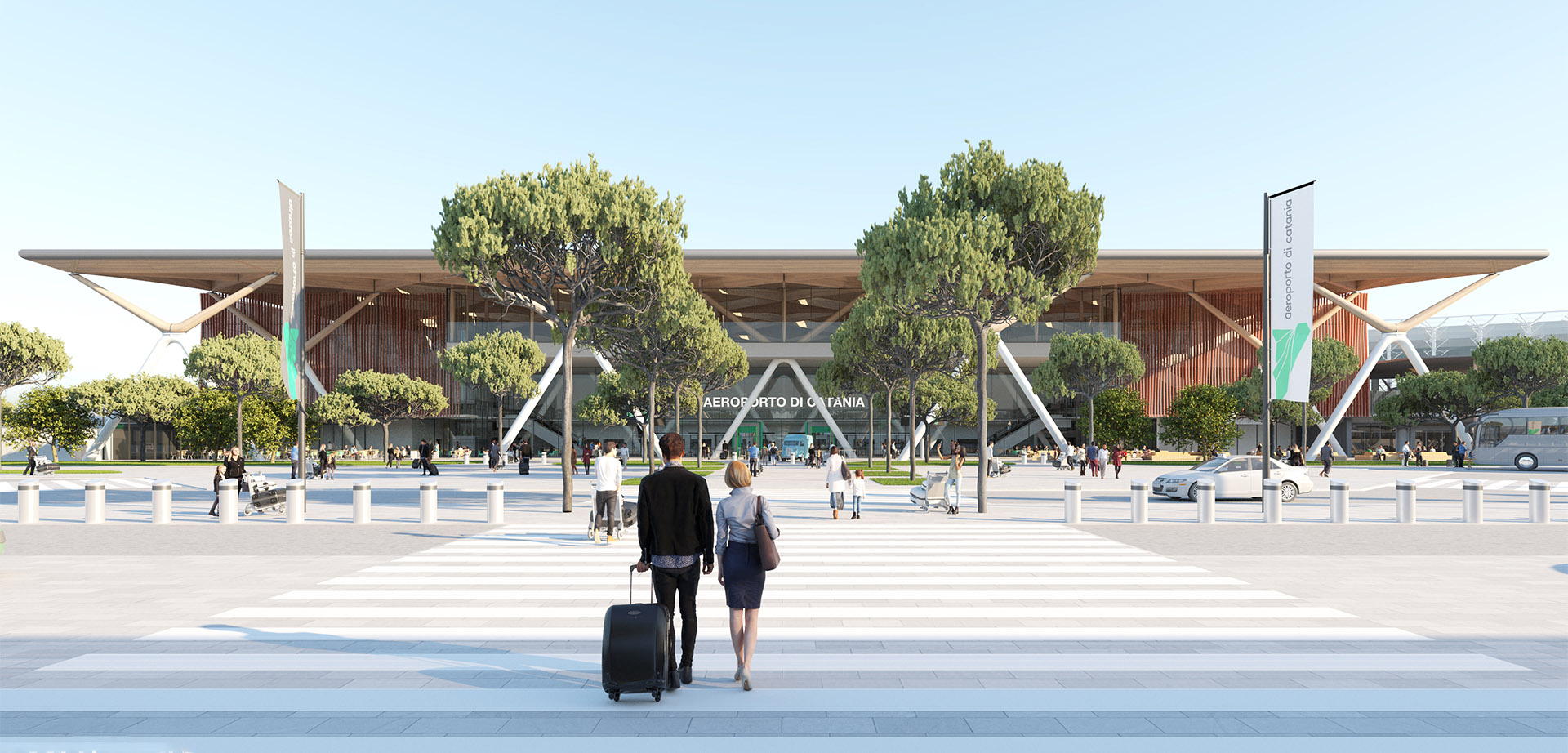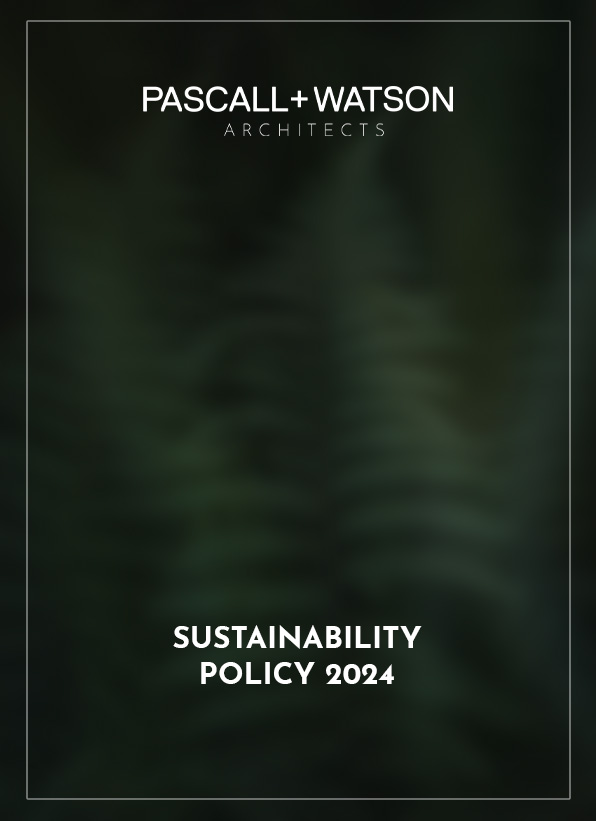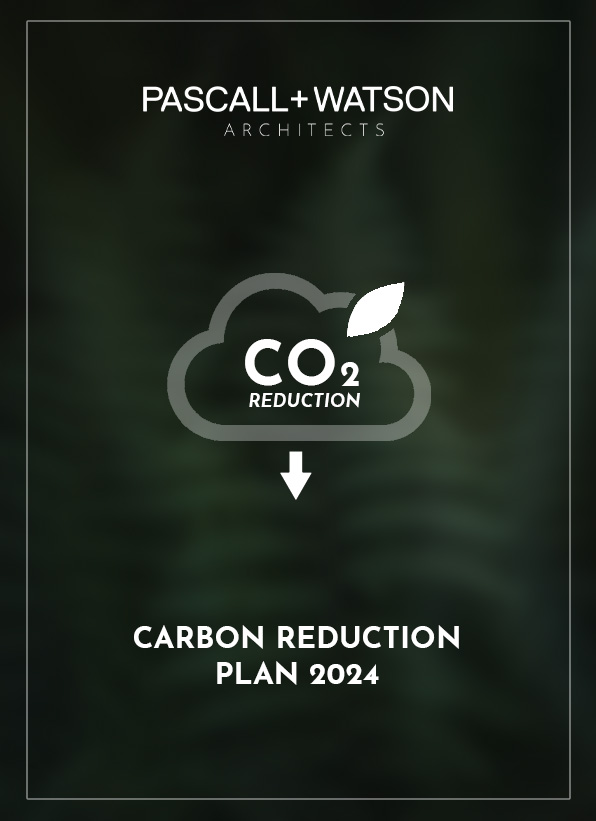SUSTAINABILITY IN ARCHITECTURE
NOT JUST A BUZZWORD
Climate change is the defining challenge of the 21st century, demanding urgent action and leadership by architects and the wider construction industry.
Pascall+Watson have made a commitment to be a long term sustainable company in line with the UN definition of sustainability, covering more than just the environment.
We are one of the select few within the Top Architectural practices, to operate as a Carbon Neutral company. (PAS2060 Certification) and we are targeting to operate as a Net Zero company by 2040.
SUSTAINABILITY PILLARS
To achieve holistic sustainability, The UN SDGs are an important place to start to understand how a business can have influence in achieving these global goals.
P+W aligns with 11 out of the 17 UN SDGs. These 11 SDGs that we align with at Pascall+Watson, were distilled to create our 6 pillars of sustainable design.
Our pillars guide our design teams in proactively reducing both
embodied and operational carbon during the design process.
Energy: Exploring renewable energy and how a building can be
efficiently designed to reduce its energy consumption.
Resources: Considering recycled content materials, buildings as
materials banks and the embodied carbon – which I’ll expand on
the next slide
Environment: Use a project to better the environment.
Social: Better the lives of all involved with the project from onsite
through to end user and neighbouring communities.
Transport: Reducing the need for journeys using personal cars.
(15m cities principles)
Waste: Reducing waste from manufacturing stages through to
construction and how is any waste created managed

On site renewables energy is the obvious choice when designing a Net Zero project, however, careful design of the building can help increase the efficiency of the energy generated for the building.
An envelope that maintains the internal ambient temperature will require minimal mechanical input, increasing the efficiency.
Integrating nature’s different elements, to passively illuminate, cool and ventilate a building can greatly reduce energy load.
Spaces not requiring to be conditioned can be an annex of the main building, further decreasing energy requirements and increasing the building’s form factor.

A sustainable building can be created by following some simple principles
If there is an existing building to be replaced, can the building be repurposed, extended or retrofitted to extend its life. Failing this, identify elements that can be repurposed and carefully disassembling them. The existing built environment should be viewed as a landscape of opportunity.
Using less materials automatically delivers carbon savings, makes the building lighter – resulting in less structural elements.
Buildings should be seen as guardians of the materials used to build them, with the components designed to be disassembled and reused elsewhere.
Specifying materials that sequester carbon can ultimately reduce a project’s embodied carbon.

The construction industry is responsible for 30-40% of global carbon emissions and undoubtedly has had an impact on the environment.
Conscious decisions need to be made when selecting materials, components and their pertinent
manufacturing processes.
Selected elements should have no impact on the environment and designed to be reused and repurposed
once their intended use has completed.
Buildings should instead act as positive catalysts for their local environment; promoting native flora and fauna, cleaning the air and designed ready to minimise effects of extreme temperatures, increased wind, rain and flood risk brought by climate change.
Spaces designed to invite the local environment in are positively received by occupants, creating wellbeing positive spaces.

The places and spaces created for communities, would be valueless without the integration of the community itself.
The multiple design and build stages of a project all lend themselves to providing a great platform to enrich the lives of neighbouring communities.
From early engagement to ensuring a project is inkeeping with what a community expects of their
surroundings, educating members of all ages of the importance of sustainable design and upskilling a local workforce are just some of the aspects that can be implemented to deliver a socially inclusive project.
Safe and wellbeing focussed spaces would ensure everyone involved in a project feeling as though they were valued and have gained personally from it.

As communities and the world increases in mobility it is prudent this is realised in a sustainable manor.
Large-scale public transport complimented by hubs and reliable onward journeys can prove highly efficient in comparison to personal vehicle journeys. Accessibility for all is key to execute this successfully.
Infrastructure exists and continues to grow to support entirely renewable energy powered transport systems.
In terms of during construction, the use of MMC & DfMA methods can result in reduced construction related transport.
Comfortable and reliable last mile sustainable transport methods will result in lower dependence on fossil fuel reliant technologies, similarly with planning infrastructure around a 15-minute city model.

Used or surplus materials were perceived as waste and of no value once they had served their design life.
This is referred to as a linear economy; where raw materials are extracted, manufactured into building component and then disposed of when their intended use comes to an end. Often, these components are in great working order and can still perform their intended use for years to come.
There is a growing understanding of a circular economy, where a component follows the same manufacturing stages as a linear economy component, except it is repurposed for another application, close-loop recycled to form a newer version of itself in another form or open-loop recycled to form part of a newer version of a new component.
Materials and components no longer required for their current use, should be seen as opportunities rather than waste. Opportunity to repurpose a component for another use.








